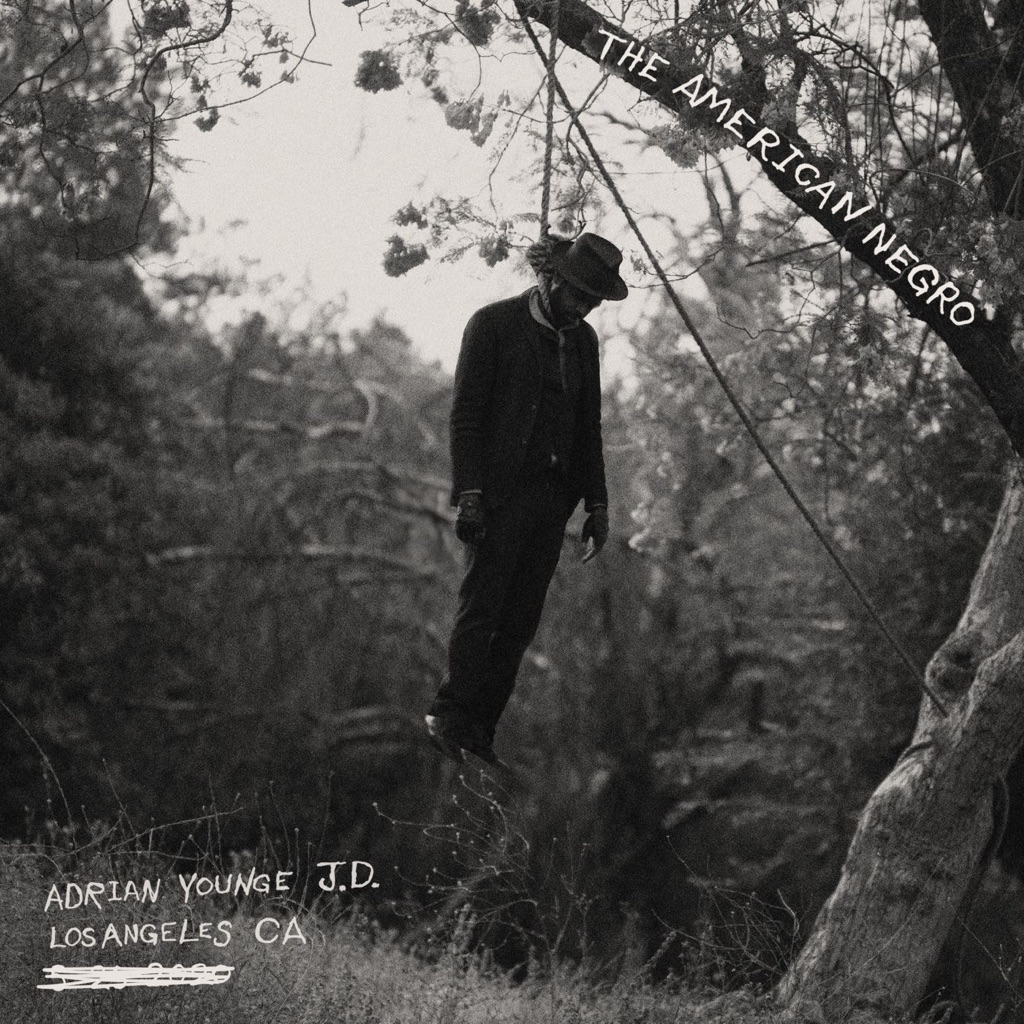
The American Negro
“This is my *What’s Going On* record, to explain why we are where we are in the world,” LA-based multi-instrumentalist and composer Adrian Younge tells Apple Music. “It’s as if Marvin Gaye hooked up with James Baldwin to record with David Axelrod—there’s so many layers to be explored.” The former law professor and frequent collaborator of A Tribe Called Quest’s Ali Shaheed Muhammad has certainly assembled a mammoth undertaking with *The American Negro*. It’s not just a 26-track album written and played by Younge, interspersed with spoken-word interludes and orchestral backing, that documents the history of ingrained structural racism in America; it\'s also accompanied by a podcast miniseries, *Invisible Blackness*, featuring guests such as Chuck D and Ladybug Mecca, as well as a short film, *T.A.N.*, which Younge also wrote and directed. “I want people to understand the history of racism and how America has been built on a slavocracy—profiting from the forced labor of Black people,” Younge says. “It is a system America has pioneered and one it has yet to reconcile or resolve.” Here, Younge tells the story behind all of *The American Negro*’s songs. **The American Negro** \"This song encapsulates the album. It lays out the perspective of double consciousness that as Black people we see ourselves as we know ourselves, but we are also seen through the lens of white America, one that defines us as the face of evil. At the start of the song, I label the pejorative terms that have come to define us—like the throwback of \'American Negro\'—and then it’s a call to edify our culture and to respect ourselves in spite of these labels. It’s a song about the power and beauty in accepting your Blackness.\" **Revolutionize** \"This is my 2021 take on Gil Scott-Heron’s \'The Revolution Will Not Be Televised.\' I’m looking at my Blackness connected to everyone else, using soul music as a means of our ancestors speaking through us, enabling a Black lineage of sound. It’s all about changing how we see ourselves, to not be determined by stereotypes but to be our best selves instead.\" **Watch the Children** \"This was inspired by a viral video of a young Black boy and young white boy running to hug each other. It is an expression of natural love and it goes to show how hate is taught, how racism is a learned behavior. This song is about how we have to learn how to smile like a child again, to go back to our primordial state to be connected as humans, rather than putting up barriers around ourselves.\" **Dying on the Run** \"Part of growing up is learning how to control your energy. With the gang mentality in the Black urban space, the Black youth is often trying to prove themselves, to show that they’re important and strong, and that can often result in violence. Yet this track is an entreaty to the fact that we cannot continue to live this way; we must learn how to be better for each other.\" **James Mincey Jr.** \"James Mincey Jr. was killed by a police chokehold in 1982, just like Eric Garner and just like George Floyd. And he was my childhood friend’s uncle. Yet he is just another Black man who was killed with no judicial reprisal, his killing wasn’t justified and no one talks about him. He is another forgotten Black young man. So I wanted to name this song after him so that people would look him up and realize that in 1982 the same thing was happening as today.\" **Mama (You Will Make It)** \"When I was writing this album, my mother was telling me that when I was younger, every time I went out she was always scared I might not come home, just because I was a young Black man and she was terrified of the violence she was seeing in the news constantly. So this is for all the mothers losing their children to injustices, whether that is because they’re locked up in prison, or because justice wasn’t served, or they had a lack of opportunity in their lives.\" **Margaret Garner** \"This is another example of me using a song to put forward a name that I want people to research. Margaret Garner was an enslaved woman who ran away with her children and when she was caught, she killed her baby to stop it from being taken back into slavery. Her story goes to show how horrific the lives of the enslaved were if suicide was their only way out. Lyrically, the song is the mother talking to her child, and musically I wanted to make it beautiful because life is beautiful and they deserved the light that they were never given the chance to see.\" **Light on the Horizon** \"A lot of minorities live in a way I refer to as having a dead soul—being so consumed with hate or a lack of vision for your people\'s future that you’re always sullen, always in a dark place. This song is a reminder that there might be bad things in your past and present, but you have to have hope for the journey ahead.\" **A Symphony for Sahara** \"The oldest slave trade is sub-Saharan slavery, which is where it all began, and in places like Mauritania it has only very recently been made illegal. These people are born into slavery and they don’t even realize it. So I wanted to write a symphony for this place that represents thousands of years of slavery, a beautiful piece for its victims.\" **The March on America** \"This song represents two opposing views in the fight for justice: the old versus the new; the love and peace that Martin Luther King preached versus the action of the Black Panther movement; war versus peace. It goes back and forth between these themes and ultimately concludes that insurrection is the language of the oppressed, that we have to sometimes show our strength to bring about peace.\" **The Death March** \"This track references the long walk to the coast that so many African slaves were forced to take when they were about to be shipped out to uncertain seas and futures. It is in remembrance to these Black kings who had no idea what awaited them and who would be chained together when they marched and tied up to trees and left along the way if they died.\" **Rotten Roses** \"As humans, we’re beautiful like roses, but as Black people, we are often viewed as inferior. We are considered molded at the seed, roses with black leaves, when in fact we all bleed the same blood and we are all human. It is just racism that sees us as rotten roses.\" **Patriotic Portraits** \"This song depicts the album cover, which is me photographed in the style of a lynching postcard. These were celebratory images of Black people being lynched which were disseminated around America as tokens of vigilante justice and mob mentality. I love America but our constitution wasn’t written to protect everyone, especially not people of color and not women, so these images come to symbolize the history of our American flag.\" **George Stinney Jr.** \"George Stinney was a 14-year-old boy who was executed in 1944 after being falsely accused of killing two white girls. He was denied a fair trial and when he was electrocuted, he had to sit on books to make sure he could even reach the headcap on the chair. It just goes to show the lack of worth and value they had for a Black human being. This song is written from the perspective of him singing before he dies and goes to heaven. It is a beautiful piece of music serving as the foundation for telling the stories of Black America. And it is the story of pioneering a new form of racism in order to gain power.\"
The American Negro is an unapologetic critique, detailing the systemic and malevolent psychology that afflicts people of color. This project dissects the chemistry behind blind racism, using music as the medium to restore dignity and self-worth to my people. It should be evident that any examination of black music is an examination of the relationship between black and white America. This relationship has shaped the cultural evolution of the world and its negative roots run deep into our psyche. Featuring various special guests performing over a deeply soulful, elaborate orchestration, The American Negro reinvents the black native tongue through this album and it’s attendant short film (TAN) and 4-part podcast (invisible Blackness). The American Negro - both as a collective experience and as individual expressions - is insightful, provocative and inspiring and should land at the center of our ongoing reckoning with race, racism and the writing of the next chapter of American history.
The multi-instrumentalist and composer’s concept album about Black existence cites everything while saying nothing. The record collapses under its own inertia.
This impassioned dissection of modern America is a challenging work well worth every second


